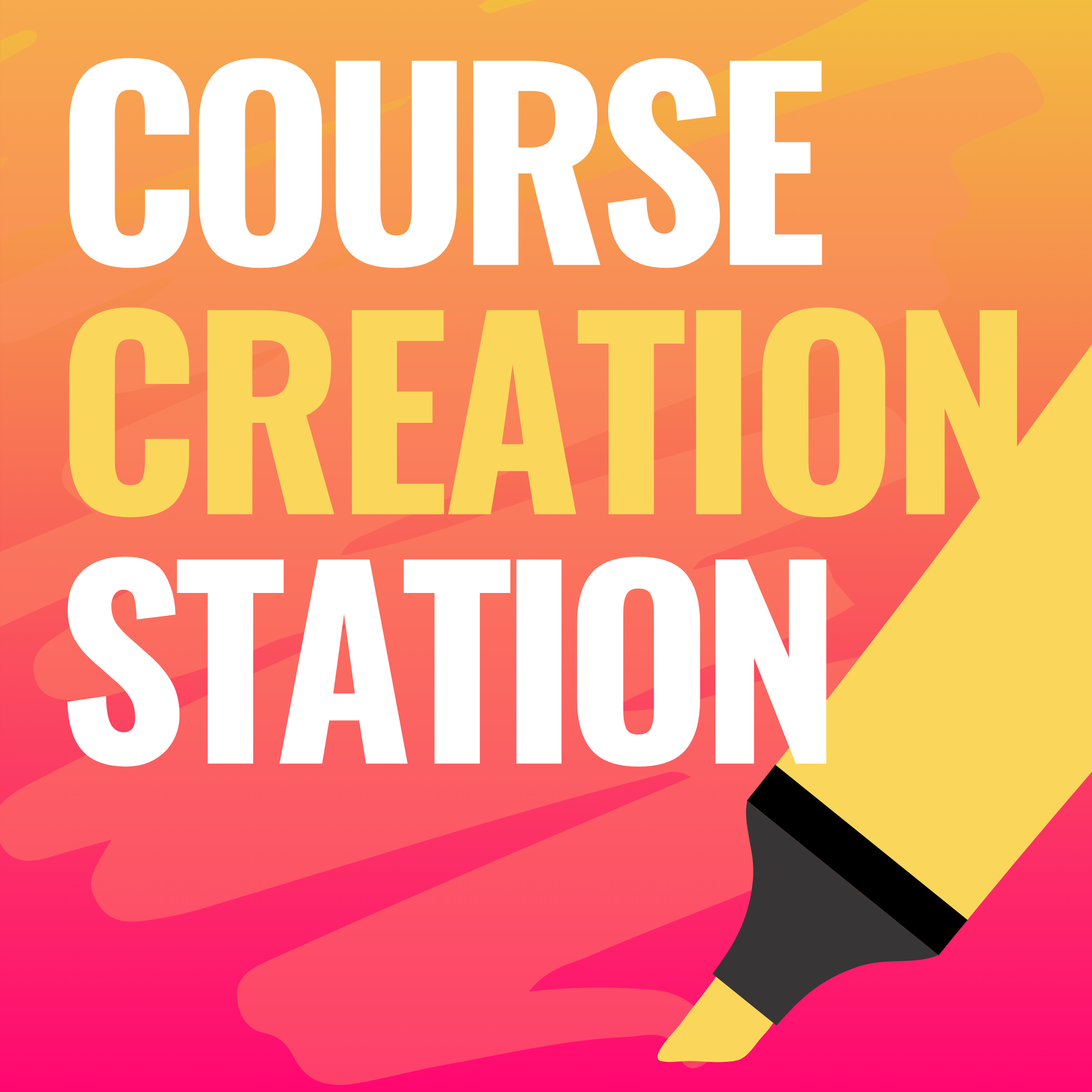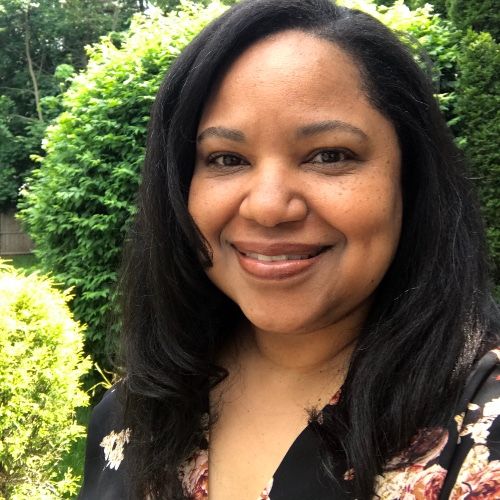Episode 8
Frameworks: The Secret that Makes You an Amazing Course Creator
Hey, Course Creator!
You've reached the show notes for this episode. But before you get started, did you grab your FREE course creation starter guide yet? Be sure to grab it at the link below and learn my 7-step course creation process:
>> Create Your AWESOME Course Starter Guide <<
About this episode:
In this episode, you will learn a trick that will make you an awesome course creator - you will learn how to create a framework for your course. Learn how to transform your expertise, proven process, method or strategies into a structured organized tools to help your students reach the transformation that you promised.
Goals:
After listening to this episode, you will know:
- What a framework is and why it's a game-changer for your course.
- Five ideas for creating your own framework for your course.
- The simple step-by-step process for developing your framework.
Stay in touch:
- Let's work together! Visit me at https://gwentanner.com and get in Contact so that we can work together on your amazing project.
- Get the FREE Create Your AWESOME Course Starter Guide! Learn my 7-step course creation process for planning and creating your awesome course.
Transcript:
Please note: This transcript may be automatically generated and may contain errors. I appreciate your understanding.
Transcript
Hey, course creators. It's time to amplify your genius. Welcome to course creation station, where we talk about creatively sharing your expertise and designing the most awesome learning experiences. I'm Gwen Tanner, career course creator, and in this episode, you're going to create a tool for your students that will help them navigate your awesome course content in the most effective and efficient way. That's right. You're turning all of that awesomeness into a valuable framework that will guide your students through your proven process. So stay tuned.
What do we mean when we talk about a framework? And what do we mean when we say a framework is a good tool for your course or program? Well, think of a framework as a structured guide that helps you navigate through a process or a strategy or a concept. A framework can also be a set of rules to help you make decisions, or it can be a collection of activities or tasks to help you reach a goal. You'll be able to find examples if you look for business frameworks, teaching and learning frameworks, product management frameworks, mental health frameworks, or even parenting frameworks. I think you get the idea.
One popular framework that you already know is the five w's and one h framework or method. Trust me, you know this one. But you might not have known it was technically a framework. The five w's are who, what, when, where, and why. And the h is how. This framework is used to get the full story or the whole picture of a situation. It's commonly used in journalism, research, and even interrogations by investigators or the police. When we ask who, what, when, where, why, and sometimes how, we believe that we've asked all the necessary questions to get detailed information about a situation, an event, or even a project. It is a framework to help us make decisions about what we know and to help us reach the goal of knowing as much as we can about a situation.
As you can see, frameworks can be used anywhere. But in our case, we're looking at frameworks for teaching our courses or programs. So, why have a framework for your course? Well, let me tell you, it's all about being clear about what you want to do and being organized so that you don't miss any steps. When your students are faced with a mountain of information or a complex problem, having a framework in place can be a lifesaver for them. It breaks things down into manageable chunks so that they can tackle them one at a time without feeling overwhelmed.
But that's not all. Frameworks also make communication a breeze. When you're explaining an idea to your students, having a common framework helps everyone get on the same page. It's like speaking the same language. It just makes everything more clear and more efficient. And let's not forget about decision making. We've all been there staring at a bunch of options and feeling just completely stuck or overwhelmed. But with the framework, you have a structured approach to weigh your choices and make informed decisions. It takes the guesswork out of the equation and gives you confidence in your choices.
Having your course designed around a framework can also make it easier for you to plan and create your course, because you will know all those chunks of course content, and you will know the support materials you will need to create for each part of your framework. So it's safe to say that having your own framework will actually make you a better course creator, and it will make it easier for your students to understand the goal of your course and how they will reach the transformation you promised.
Now, I have a few ideas for creating your own framework. I'm going to describe five ways that you can create and use your own framework for your course.
First, you can create a framework that helps students learn your proven process. For example, if you're designing a leadership course, you might have a framework for becoming a successful manager, where your students move through your proven process for becoming a better manager.
Second, you can create a framework for a plan or to help your students create their own plan. So say, for instance, you're teaching health and fitness. You can make a framework for students to design their own healthy eating plan.
The third type is a framework for creating something new. As an example, a framework to create your first website. It could have four phases, setup phase, design phase, and testing phase, and a go live phase. And that framework gives structure to the course.
Fourth, what about a framework for changing mindset? Maybe you're teaching a mental health course for busy women. You could create a framework for them to live a stress-free and happy life that gives them a structure of small changes they can make over time, a change of mindset.
And finally, you can create a framework for understanding a framework that describes how something works or evolves. An example is the amazing student story that I shared in a previous episode. I think that was episode three. I designed that framework to explain the eight stages a student goes through to learn something new.
I hope by now you're getting some ideas for your own framework, but you're probably wondering how to create one. Well, I'm going to tell you a very simple process you can use. Here we go.
Step one, you will need to break down your proven process, your strategy, your formula, your method, or your path to success into at least three steps, phases, categories, or milestones. And I'm going to suggest you keep the number of steps in the single digits, maybe no more than eight or nine steps for your course. Of course, it all depends on what your proven process or strategy is, and you can surely have as many steps as necessary. But if you find that you're over about eight or nine steps, take another look to see if anything can be combined, because the simpler it is to read and absorb, the easier it will be for your students to understand.
Step two. Now that you have all your steps, give each step a name. Maybe you want each step to have a one word name, like initiation or preparation. Or each step could be a phrase like startup phase and shutdown phase. Or you can even think about using an acronym. For example, if I were teaching a framework for throwing a dinner party, I could have the acronym feed. Feed that stands for food, eat, entertain, and dessert. And this framework could be an easy way to teach that for a dinner party, we need to decide what food to have, where or how the people will be eating, maybe at a formal table or casual by the pool, the entertainment, and how dessert will be addressed.
Step three is to give your process strategy formula or method a name. You can call it a framework matrix, strategy, pillars, method, model, dimensions, milestones, whatever you want. And if you use an acronym for your steps, that could be part of the name, too. For example, my dinner party framework could be called the feed method or the feed formula, which sounds kind of cool. Now we're at my favorite part.
Step four is to visualize your whole process and turn it into a diagram. To make it easy to get started, simply create a box for each one of your steps. Use Canva or your favorite graphics tool, or just get out some markers and some thick paper and draw boxes for each of your steps. And put the name for each of your steps inside each of the boxes. You might want to look at some other frameworks to get ideas, and you might eventually decide your framework is circular or pyramid shaped. Or your framework might consist of columns or even a ladder. But the first step is to get it out of your head and onto paper, and this will be your first draft. You can always tweak it later.
Step five, you will now create the course materials to support each step or phase in your framework. This could be checklist, worksheets, videos, spreadsheets, or whatever you think your students could use to complete that box in your framework successfully. And finally, step six. Over time, work on perfecting your framework to make it more awesome. If it's something you've already been doing for years, you might be able to skip this step or just work on getting your diagram the best it could be to represent your framework. But if it's something new that you're creating for your course, try to run through the framework yourself and see how it feels. Take time to optimize it, and remember, you can trim it down by removing boxes or steps, and that would be best. It may take a while for you, observing your students working through the framework to determine if you need to make any adjustments.
And that's it. The six steps to creating your framework so what do you think? Do you think a framework will work for your course? Well, I hope you can see the value for both you and your students to having a structured approach to learning the strategies or the content that you're teaching. And if you do create a framework, please share it with me because I love a good framework.
If you have any questions, or if you want to learn more about creating frameworks, be sure to reach out to me. And thank you for joining me today for this episode of course Creation Station. Be sure to visit coursecreationstation.com to view today's show notes and subscribe.


